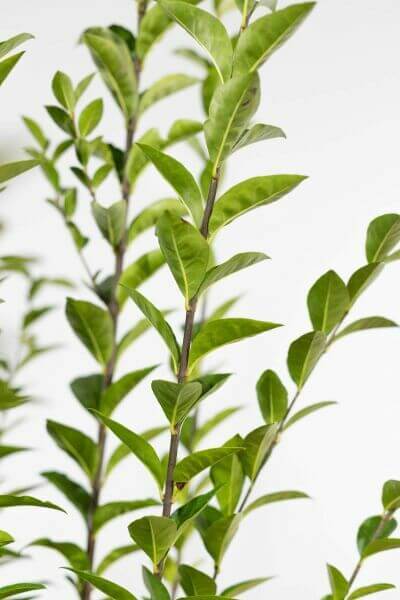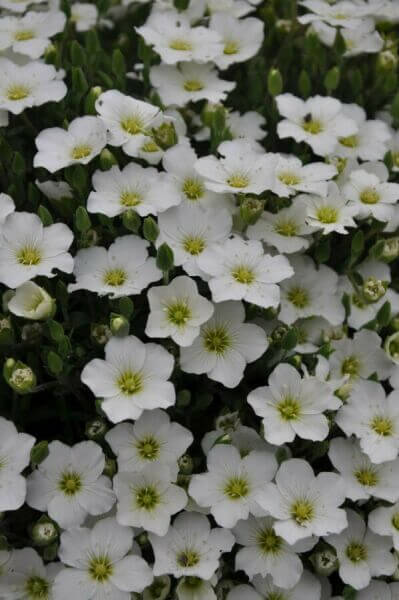Hedge Plants For Green Walls
Hedge Plants For Green Walls
Blog Article
Best Hedging Plants For Neat Hedges
Improve your garden's allure with lavish hedge varieties such as Yew (Taxus), Thuja, Laurel, Photinia, and Bamboo, commemorated for their structural integrity and ecological benefits.
Yew and Thuja offer evergreen coverage and winter season resilience, while Laurel provides quick growth and broad, fragrant leaves.
Photinia includes seasonal charm with its dynamic red foliage, and Bamboo provides a low-maintenance, serene ambiance.
These hedges enhance air quality, reduce noise, and develop tranquil, private spaces.
Appropriate planting, spacing, and upkeep ensure vigorous development and eco-friendly harmony.
Check out how these lavish varieties can elevate your garden's charm and wellness.
Secret Takeaways
Change Your Garden With Lush Hedge Varieties
- Select Yew for its dense, evergreen growth and unequaled longevity.
- Choose Laurel for its fast growth and broad leaves, making sure fast personal privacy.
- Choose Photinia for its vibrant seasonal foliage, which turns a striking dark red.
- Use Bamboo for a low-maintenance, winter-hardy hedge with visual appeal.
- Area plants 2-3 per meter and prune routinely for optimum development and health.
Popular Hedge Plants
When transforming a garden with lush hedge varieties, it's necessary to consider popular hedge plants such as Yew, Thuja, Laurel, and Photinia due to their distinct characteristics and benefits.
Yew (Taxus) is highly esteemed for its longevity and dense, green growth, making it a prime choice for enduring landscapes.
Thuja is noted for its evergreen foliage and robust winter resilience.
Photinia adds seasonal vibrancy with red leaves that darken over time, developing vibrant visual appeal.
Laurel uses fast development and fragrant, broad leaves, ideal for quick personal privacy.
In Addition, Bamboo is an exceptional option for atmosphere, providing a low-maintenance, winter-hardy choice that enhances the garden's visual with its classy, swaying walking canes.
These choices accommodate a variety of horticultural requirements and choices.
Benefits of Garden Hedges
Garden hedges offer a multitude of advantages, making them an important addition to any landscape. These natural barriers are economical to implement and provide substantial wind security, enhancing air blood circulation and adding to noise decrease. The dense foliage of hedges like Thuja and Beech makes sure privacy by obstructing presence, producing a secluded and peaceful environment.
Hedges likewise play an essential function in microclimate policy, providing a steady environment that fosters plant development and reduces temperature level changes. Their intricate leaf structures filter contaminants, improving air quality and adding to a healthier garden environment.
Moreover, hedges stand out in noise decrease, absorbing and deflecting sound waves to lower ambient sound levels. This dual performance of supplying both acoustic and visual personal privacy improves the total tranquility and visual appeal of any garden.
Planting and Upkeep Tips
For a successful hedge, precise preparation of the planting location is essential. Guarantee the soil has correct pH and drainage to support strong root advancement.
Area the plants appropriately for the selected types. Water the hedge regularly during its initial development stage, adjusting as required with seasonal modifications.
Implement a systematic insect control and illness avoidance strategy, using chemical or natural treatments when essential. Regularly inspect for aphids, mites, and fungal infections.
Apply mulch to keep wetness and reduce weeds. Seasonal pruning promotes thick development and air circulation, important for plant health.
Following these guidelines will assist you cultivate a dynamic, properly maintained hedge that boosts the appeal of your garden.
Spacing and Cutting Guidelines
Spacing and Trimming Guidelines
Proper spacing and trimming are crucial for cultivating healthy, visually appealing hedges. Adequate spacing guarantees each plant receives adequate nutrients, light, and airflow.
Follow these guidelines for optimal hedge maintenance:
- Spacing: Position hedge plants 2-3 plants per meter to encourage robust growth.
- Pruning Techniques: Routine pruning is necessary for maintaining preferred hedge height and shape. Trim new development in summertime and cut back older wood during winter.
- Seasonal Care: Adjust cutting schedules and methods according to seasonal requirements to make sure plant health.
- Hedge Height: Regularly display and cut to preserve the preferred hedge height and accomplish uniform visual appeals.
Complying with these actions will ensure your hedge thrives, boosting both the appeal and performance of your garden.
Selecting the Right Hedge
Choosing the Right Hedge
Selecting the proper hedge involves evaluating aspects such as fully grown height, foliage density, and environmental strength. Successful hedge plant selection needs comprehending each species' development qualities and site-specific adaptability.
For instance, Yew (Taxus) provides excellent durability and dense development, while Thuja is noteworthy for its winter durability. Additionally, thinking about maintenance requirements is vital; fast-growing species like Laurel or Privet need regular cutting, whereas low-maintenance options like Bamboo or Ivy may be more effective for those seeking very little upkeep.
Environmental aspects such as soil type, light accessibility, and wetness conditions ought to likewise assist the selection procedure. This careful technique guarantees the picked hedges will flourish, supplying both practical and aesthetic advantages to the garden landscape.
Shipment and Planting Recommendations
To ensure your hedge plants prosper, they should be delivered by specialized carriers and planted quickly upon arrival.
Follow these essential actions for successful planting:
- Soil Preparation: Enhance the soil with raw material to improve drain and nutrient material.
- Planting Depth: Create a trench twice the width and equal to the depth of the root ball.
- Watering Strategies: Water completely after planting, keeping the soil consistently moist however not filled.
- Mulching: Use a layer of mulch to retain moisture and suppress weeds.
Client Assistance and Service
Offered the crucial role of timely support in horticultural pursuits, our consumer assistance group is available six days a week through telephone, email, and social media to offer professional recommendations and quickly attend to any issues. Their devotion to fast action times makes sure consumer satisfaction by resolving questions related to plant health, optimal planting methods, and upkeep schedules.

-------------------
Within 24 hours
This detailed support group, reinforced by a stellar 9.3/ 10 client score, highlights our dedication to boosting the gardening experience for every single customer.
Frequently Asked Questions
How Long Does It Take for Hedge Plants to Establish?
Hedge plants typically require one to three years to become completely established, with the precise duration varying by species and growing conditions.
Effective care during this critical period is essential for robust growth. Constant watering, alert weed control, and proper fertilizer application are essential in promoting strong root advancement.
For instance, fast-growing types like Laurel may establish quicker, while slower-growing varieties such as Yew may take longer. Thorough upkeep accelerates the establishment process, leading to healthy and thick hedges.
What Are the Best Hedge Plants for Privacy?
The question of the finest hedge plants for personal privacy includes assessing evergreen and deciduous choices.
Evergreen hedges like Thuja, Laurel, and Cypress provide year-round protection, making sure constant privacy.
In contrast, deciduous hedges such as Beech use seasonal privacy, shedding leaves in colder months.
Secret upkeep suggestions for privacy hedges consist of regular trimming, fertilizing in spring, and correct spacing-- usually 2 to 3 plants per meter.
Additionally, constant watering and persistent weed removal are vital for promoting healthy, thick development.
Can Hedge Plants Attract Wildlife to My Garden?
Yes, hedge plants can bring in wildlife to your garden by offering essential advantages like shelter, food, and nesting sites, therefore improving regional biodiversity. For circumstances, yew, holly, and laurel are excellent for bring in birds, while ivy supports a variety of pests.
However, it is very important to note that there are some disadvantages, such as increased upkeep to manage bugs and regular upkeep. Carefully choosing and keeping hedge varieties can assist balance these drawbacks and advantages, ultimately promoting a lively and sustainable community in your garden.
Exist Any Blooming Hedge Plants Available?
Yes, there are flowering hedge plants offered that can boost the appeal of your garden.
For example, Elaeagnus, likewise understood as Olive Willow, produces fragrant white flowers in the fall, adding a touch of beauty.
Photinia, another popular option, showcases lively red leaves that mature into a rich green, producing a vibrant visual result throughout the seasons.
To ensure these plants flourish, click here it's vital to practice correct pruning techniques and seasonal maintenance, such as trimming new development in the summer season and cutting down in the winter season.
These measures will help maintain the health and aesthetic appeal of your flowering hedges.
How Do I Prevent Insects in My Hedge Plants?
To prevent insects in hedge plants, utilize natural insect control techniques and keep correct hedge care. Present helpful pests like ladybugs, which victimize hazardous pests, to create a balanced ecosystem.
Regularly inspect your hedges for signs of infestation and quickly eliminate any afflicted parts to prevent the spread. Ensure the health of your hedges by applying balanced fertilizers and supplying appropriate water.
Make use of mulching to keep soil moisture and proper spacing to reduce plant tension and promote robust growth. These practices jointly help in lessening insect issues and maintaining a healthy hedge.
Conclusion
In essence, picking the ideal hedge varieties such as Yew, Thuja, and Laurel can transform any garden into a tranquil sanctuary. These plants offer year-round greenery, boost visual appeal, and offer useful advantages like noise decrease and wind security.
Proper planting strategies, accurate spacing, constant watering, and seasonal trimming are vital for optimal development.
Dependable delivery services and skilled customer support make sure a smooth experience from purchase to planting, making it simpler than ever to elevate your outdoor space.
Garden hedges use a plethora of benefits, making them a valuable addition to any landscape. These natural barriers are affordable to execute and supply substantial wind defense, boosting air circulation and contributing to noise reduction. The dense foliage of hedges like Thuja and Beech ensures privacy by blocking visibility, producing a serene and remote environment.

Pruning Strategies: Routine pruning is important for maintaining wanted hedge height and shape. Cut new development in summertime and cut back older wood during winter season.
Report this page